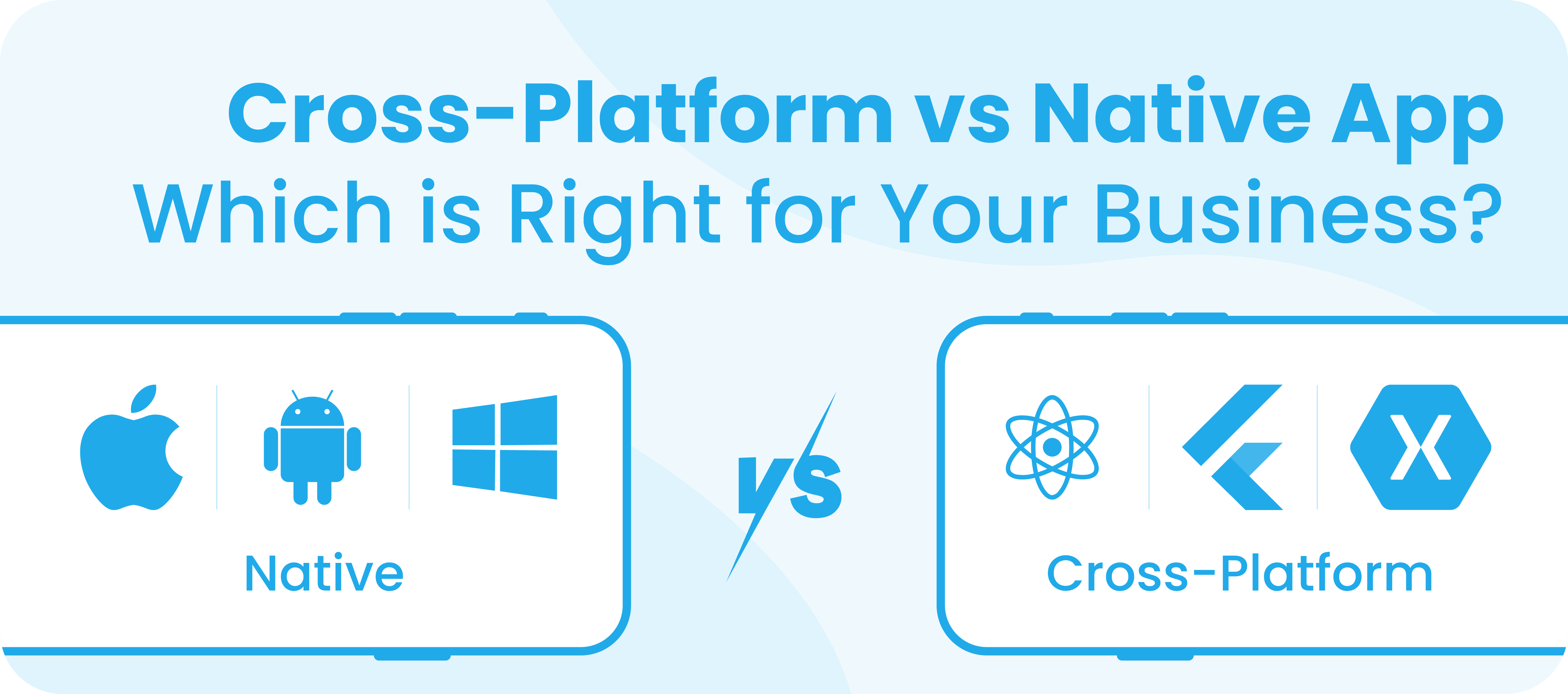

Are you ready to disrupt with AI? Join our Hackathon today! Click to Register
By WebOsmotic Team | Published on October 9, 2024
Summarize Article

Table of Contents
ToggleThe main difference between cross-platform and native app development is that cross-platform apps use a single codebase to run on multiple platforms, while native apps are built separately for each platform (iOS, Android). Native apps offer better performance and UI; cross-platform apps reduce development time and cost.
When it comes to developing a mobile application, there is a critical question that every company has to deal with. Cross-platform vs native app development – what to choose?
Both methods have their advantages and disadvantages and a decision made will inevitably depend on the specifics of the business – its objectives, financial limits, and how the target audience is to be engaged.
In this article, we will compare cross-platform mobile application development with native one and provide a hint on when to use which approach in your business.

Setting the app’s functionality and its users within the confines of a single platform, usually an iOS or Android is called native app development. This is done in the language that is native to the operating system in question; for iOS it is normally Swift or Objective-C, while for Android, Java or Kotlin is the preferred language.
As an illustration, while looking at React Native vs Swift, it is obvious that Swift (the native language for iOS) comes with more exposed features that let developers utilize more of the up-to-date features on Apple devices. This allows iOS developers to construct hyperactive applications with advanced levels of functionality.
Cross-platform mobile application development is the process of creating a single application that can work on multiple platforms.
For example, on both iOS and Android operating systems, it is clear that there is the use of one code base.
This means that rather than making two different applications, developers have to make the code once and use it in various operating systems. They include React Native, Flutter, and Xamarin among other frameworks that support cross-platform mobile development.
One of the main benefits of cross-platform applications is lower costs. It’s only one Android application development because only one code base has to be created and supported.
This helps a lot for younger companies or those with small budgets who want to target both iOS and Android but do not wish to spend resources on two apps of such reach.
When we are talking about react native vs Swift, both can be more advantageous than the other depending on the project requirements.
React Native is a framework for building mobile applications using only one code base for both iOS and Android, with JavaScript as the programming language. It is ideal for this type of project because of the tight deadlines and low-cost ratios.
Now if you want to create an application just for the iOS platform and you wish to get the best out of it, utilize the latest version of Apple, then Swift. On the other hand, you can use the cross-platform framework react native to create apps for both Android and iOS within an affordable budget.
However, the native app performance will not be as good as that of but will still be good.
Cross-platform mobile development has advanced greatly but there are scenarios whereby native application performance is irreplaceable. For instance, if your application does computation-intensive work, uses special hardware, or needs complex graphics, it is better to develop it natively.
Native applications are more functional in offline mode and usually incorporate better operating system features such as push notifications, background processes, etc. Thus, if the performance and the experience for the users come first native development is the best approach.
Another solution that should be taken into account is hybrid mobile applications that have characteristics of both native and web applications. Hybrid applications include HTML5, CSS, and Java scripting to build an application.
However, the application is encased within a shell of the native device allowing the app to run on different devices. They also enjoy some advantages of cross-platform apps like cost-effectiveness and time to market.
Moreover, hybrid mobile apps can hardly be compared to fully native applications.
Many of the attributes associated with mobile native applications such as speed and responsiveness are often glossed over when it comes to hybrid mobile applications.
They are still a good alternative for companies that have simple apps to develop or where speed is much more valued than the performance of the features.
Cross-platform vs native app development is the crossroads where you are faced with consideration. It focuses on what comes out of the two options concerning your business situation, finances, and aspirations in the future. In the event targeting a wider audience and cost savings are of overreaching importance.
Opting for Cross-Platform App Development and using instruments like React Native is appropriate. One does not need to develop separate apps for iOS and Android which helps save money and effort.
Unlock exclusive insights and expert knowledge delivered straight to your inbox